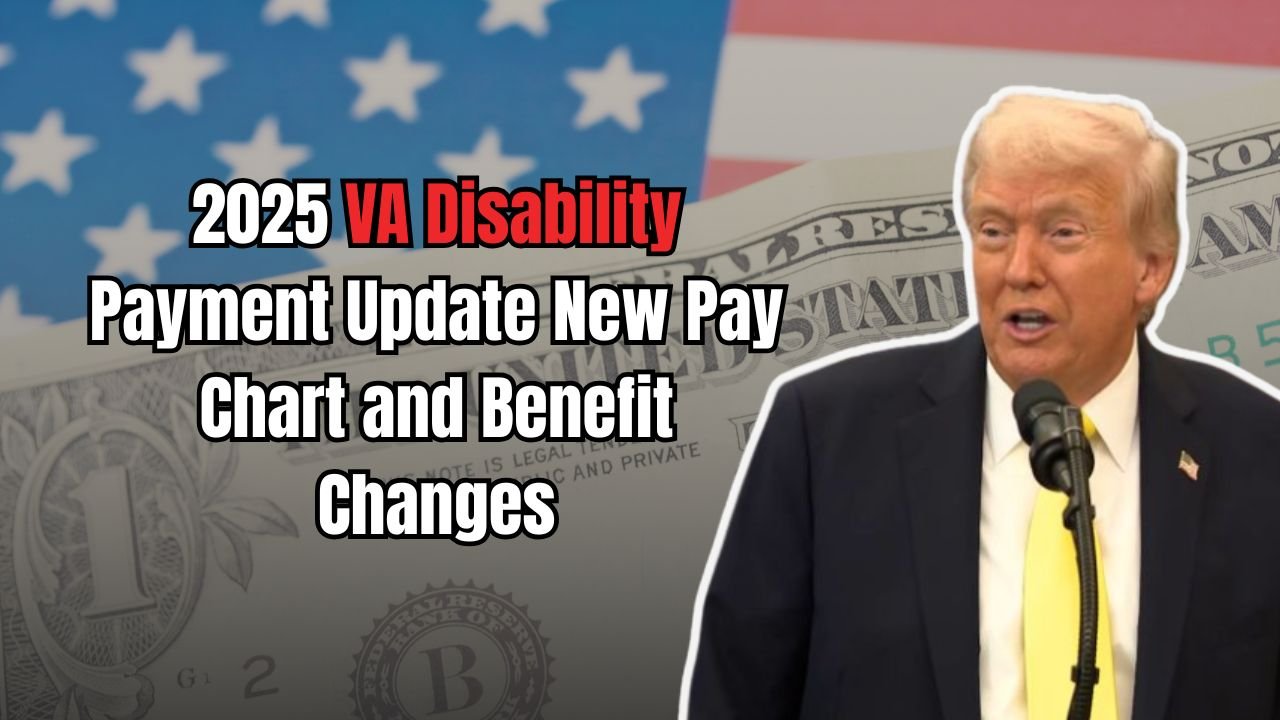The U.S. Department of Veterans Affairs (VA) Disability Pay Chart for 2025 is a new table that shows how much veterans and their dependents may receive each month. The payment depends on factors such as the veteran’s disability rating, family situation, and other considerations.
Main Objectives
- To deliver financial protection to veterans and their families.
- To provide compensation for physical or mental harm suffered during service.
- To support monthly living costs, healthcare, and general well-being.
One key feature of the 2025 update is an added Cost-of-Living Adjustment (COLA), designed to help the payment amounts keep pace with inflation and rising living expenses.
How will the new adjustments work?
Cost-of-Living Adjustment (COLA)
In 2025, payments under the VA disability scheme will increase in line with inflation. The COLA could average around 2 % to 3 %, helping veterans keep up with rising costs.
Family Factor
If a veteran has a spouse, children, or other dependents, their monthly payment is adjusted upwards accordingly.
Disability Percentage Rating
Each veteran is assigned a disability rating from 10 % to 100 %, and the higher the rating, the larger the payment.
For example: someone rated at 50 % might have earned roughly $1,200 in 2024; with the 2025 COLA, that might rise to approximately $1,230–$1,240.
Eligibility Requirements
To qualify:
- Service must include active duty in the Army, Navy, Air Force, Marine Corps or Coast Guard.
- The disability must stem from or be linked to military service (physical or mental).
- Required paperwork and medical certification must be submitted.
- Dependents must be reported/updated.
Note: Veterans rated at 100 % receive the maximum monthly sum; those rated between 10–90 % receive proportionally less.
How do these changes affect veterans and their families?
Enhanced Financial Security
Higher monthly payments ease financial pressures and help meet ongoing living expenses.
Inflation Protection
The COLA ensures payments retain real purchasing power even when prices go up.
Healthcare & Living Support
Larger payments better cover healthcare costs, prescriptions, and daily household needs.
Family Stability
Dependents receive additional support, aiding educational needs and everyday life.
Example: A veteran rated at 70 % might have received $2,000 monthly in 2024; in 2025 with adjustments, that could increase to about $2,060–$2,070.
Expert Views
Veterans-benefits professionals emphasise:
- The importance of monthly payments for financial and emotional wellbeing.
- The necessity of COLA to counteract inflation.
- The value of dependents’ allowances in fostering social and economic security.
They also advise veterans to keep their VA profiles current so the updated payments can be directly deposited without delay.
Conclusion
The 2025 pay chart for VA disability benefits introduces meaningful increases that bring greater financial protection, inflation resistance and family support. Veterans and their families stand to benefit significantly from the revised structure, including the COLA and dependent-based adjustments.
To ensure seamless access to these enhanced benefits, veterans should maintain up-to-date documentation and profiles with the VA. With this foundation in place, the 2025 revision not only provides immediate relief but also builds a stronger foundation for long-term financial stability.
Frequently Asked Questions
What kinds of disabilities qualify for VA Disability benefits?
Most service-connected physical injuries (like combat wounds or training accidents) and mental health conditions (such as PTSD) qualify. The key factor is that the disability must be caused by or aggravated during military service.
How does the COLA (2–3 %) affect the monthly payment?
The COLA raises monthly payments so veterans can maintain purchasing power despite inflation. For example, a payment of $1,200 might increase to around $1,230–$1,240 with a roughly 2–3 % boost.
Can dependents receive extra benefits apart from the veteran’s payment?
Yes. If a veteran has a spouse, children, or other dependents, additional payment increments apply to the veteran’s monthly benefit, helping support family expenses and education.


